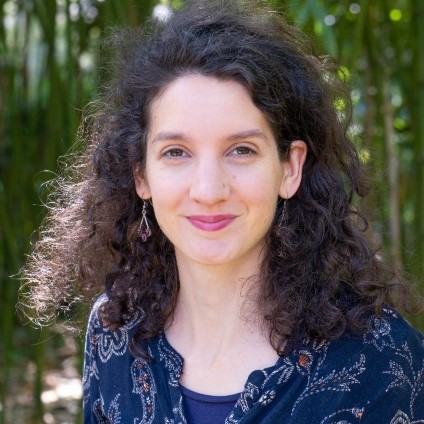Rebecca Edgerley, a PhD student in Sociology, takes us on a journey through her ‘unruly, but sustaining working practices’…
I am writing this blog on the train between Truro and London, having already missed my own self-imposed deadline for submitting it. Outside my window it’s the beginning of April. The sky is cloudless blue; the trees are on the verge of green; gorse flower whizzes past in shocks of yellow. Time to unfurl my finger-tips and type what I promised.
Best intentions
In January 2022 I became a part-time Postgraduate Researcher, whilst retaining my longstanding part-time role as an Educator Developer for the University’s Learning Experiences and Innovation team. Of course, I continued to be an all-the-time parent! As one child was in full-time education, and the other fast approaching this transition, I felt the time was right to immerse myself in academia, having put it off since my Masters over fifteen years ago. When I first commenced the PhD, I attempted to strictly partition my time between PhD, employment, and home life. I disaggregated my email accounts, blocked out time in my Outlook calendar based on ‘the hat’ I was supposedly wearing, and tried to enforce a strict school drop-off and pick-up arrangement with my partner.
To begin with I was smug about the tidy boundaries I had drawn out for myself. I think I was also over-confident. Having worked at the University for some years, and lived in Falmouth for several more, I definitely had a head start when it came to navigating institutional systems and feeling at home.
One hat on, one hat off?
I used to think my new routine would be a case of practising a juggling act – one hat on, one hat off – as you switch from one performance to the next. From analysing my field notes to cooking a family dinner; planning a session on assessment feedback to practising phonics with my five-year old. Initially, it would be difficult, but eventually it would become habitual and easy.
Two years on and my staff and student email accounts are still separate, but sometimes I have to double-check which inbox I’m looking at. My web of connections has become knotted as colleagues contact me about my research and the Learning and Teaching in Higher Education (LTHE) programme on which I teach. I might even see them again at the school gate! Apart from scheduled events, my outlook calendar is mainly white space, void of regulated time. No more descending black bars signalling I should have been half-way through a task by now. As for the school-run, I’m grateful for the fresh air and leg stretch whenever I have the chance. If I need to break away from data analysis, walking and talking about ‘the most powerful Pokémon’ is a good tonic.
Being multiple
Trying to wear only one hat at a time was a short-lived endeavour. The demarcations I drew for when to ‘change hats’ rapidly broke down and dissolved… if they were ever really there at all. When I accepted that my habits of working and thinking were more fluid, blurry, and web-like I felt able to think not just about, but through, the relationships between my research, teaching and parenthood. The hours I pour into planning teaching, for a few precious hours of delivery, triggers similar anxieties about the time I dedicate to meticulously planning my research project versus time spent ‘in the field’. Frantic mornings spent rallying the children to school, where they are away from me for most of the day, troubles my conscience about what I am prioritising.
Reflecting on all this enables me to understand how I practice my own ethics of care; why that preparation time is important; how doing it myself – whether cobbling together someone’s packed-lunch or painstakingly checking an Outlook invite – changes the way in which I feel invested in what I do.
For me, it is about wearing multiple hats at the same time, sometimes all at once. It is about refashioning old hats and making new ones. This can be a place of disarray and confusion at times. Ideas, inspiration, imagination unravel faster than I can weave them into something cogent. I do not pretend that being multi-hatted always serves me well, but at least I feel I can embrace, and learn from, a variety of interests and responsibilities. After all, our identities, our disciplines, our knowledge-making practices – they do not subscribe to neat rules of addition, subtraction and substitution. As Marilyn Strathern says, “interests are developed in relation to one another and thereby create multiple, that is, divisible, forms of knowledge”.1
Needing to rest my eyes, I look out the train window. Everything is zipping by in a brown-green blur. I gently remind myself that Spring needs a whole Summer, Autumn and Winter to grow.

Rebecca Edgerley is a PhD Researcher in Sociology and holds a studentship with the University’s RENEW Project. Her PhD explores the relationships between creative methods and interdisciplinary practices, which she is investigating through her project, the Creative Club. Rebecca is also a Senior Educator Developer and teaches on the Learning and Teaching in Higher Education programme. She has a background in English Literature and Language, and Norse & Viking Studies. She has worked in project management and administration for the arts, and for the voluntary sector in conservation, education, and archives.

